 There is always more to success than what meets the eye.
There is always more to success than what meets the eye.
Just like an iceberg, the visible part of success is only a small fraction of what lies beneath the surface. What is visible to others – such as wealth, fame, and recognition – is often the result of years of hard work, dedication, and sometimes luck.
The majority of the effort that leads to success happens behind the scenes, where no one can see it. This includes the long hours of practice, failures, and sacrifices that are necessary to achieve greatness.
It’s important to remember that success is not just about achieving external goals, but also about personal growth, learning, and the journey that leads to those goals. By keeping this in mind, we can appreciate the full breadth and depth of success and understand that it takes more than what meets the eye to achieve it.
Category: Uncategorized Page 1 of 3
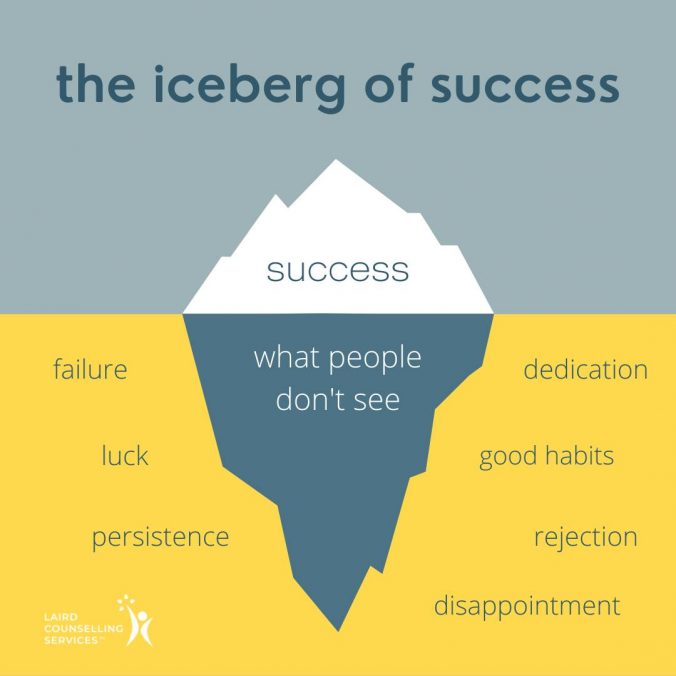
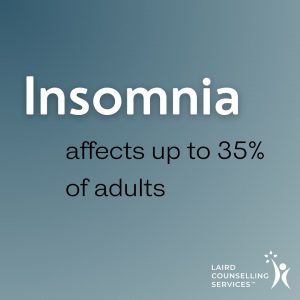 Did you know that insomnia affects up to 35% of adults?
Did you know that insomnia affects up to 35% of adults? ![]()
What is insomnia?
Marked by difficulties in falling asleep, staying asleep, and achieving the desired duration of sleep, insomnia can cast a shadow over both nights and days. Its repercussions include excessive daytime sleepiness, an elevated risk of accidents, and widespread health effects stemming from sleep deprivation.
Insomnia can be related to many different causes, including:
Stress: The weight of daily life can infiltrate the tranquility of sleep.
Irregular Sleep Schedule: Disruptions in sleep routines can trigger and perpetuate insomnia.
Poor Sleeping Habits: Neglecting the fundamentals of healthy sleep practices.
Mental Health Disorders: Conditions like anxiety and depression intertwine with insomnia.
Physical Illness and Pain: Underlying health issues can disrupt peaceful sleep.
Medications: Certain drugs may interfere with the sleep cycle.
Neurological Problems: Disorders affecting the nervous system may disrupt sleep.
Specific Sleep Disorders: Conditions like sleep apnea or restless legs syndrome can interfere with sleep.![]() A Complex Tapestry:
A Complex Tapestry:
Insomnia is not one-size-fits-all; its manifestation varies based on causes, severity, and underlying health conditions. The interplay of stress, irregular schedules, mental health, and physical well-being creates a complex web that initiates and exacerbates insomnia.
Understanding the intricacies of insomnia is the first step toward tailored solutions. By unraveling this sleep struggle, we pave the way for more restful nights and brighter days.
If you’re affected by insomnia, contact your primary care provider, and reach out to a mental health professional to explore treatment options.
 It’s important to remember that you don’t have to meet other people’s expectations in order to be successful. What matters most is that you follow the path that works for you. It’s okay if you have different goals or take a different approach than others.
It’s important to remember that you don’t have to meet other people’s expectations in order to be successful. What matters most is that you follow the path that works for you. It’s okay if you have different goals or take a different approach than others.
Everyone has their own journey and it’s important to honor that. Don’t let the opinions of others hold you back or make you feel like you’re not doing enough. Trust your instincts and stay true to yourself. At the end of the day, you are the one who has to live with the consequences of your decisions, so make sure they are ones that align with your values and aspirations.
Embrace your unique path and celebrate your successes, no matter what other people may think.
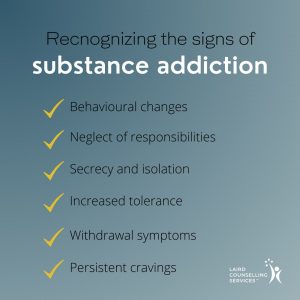 What is substance addiction?
What is substance addiction?
At its core, it involves a compulsive need for drugs or alcohol, often leading to continued use despite adverse consequences. It is usually associated with a psychological as well as physical dependence.![]() Identifying the signs of substance addiction is a crucial step toward intervention and recovery. Keep an eye out for these indicators:
Identifying the signs of substance addiction is a crucial step toward intervention and recovery. Keep an eye out for these indicators:
Behavioral Changes: Sudden shifts in behavior, priorities, and interests.
Neglect of Responsibilities: A decline in fulfilling personal, professional, or social obligations.
Secrecy and Isolation: Attempts to conceal substance use and withdrawing from social connections.
Increased Tolerance: Needing more of the substance to achieve the same effect.
Withdrawal Symptoms: Physical and psychological distress when not using the substance.
Persistent Cravings: Overwhelming urges to engage in substance use.![]() Starting the Conversation:
Starting the Conversation:
Breaking the silence surrounding substance addiction is important. Engaging in open, non-judgmental conversations fosters an environment where individuals feel comfortable seeking help. It’s not just about identifying the issue; it’s about creating a space for understanding and support.![]() Compassionate Support is Key:
Compassionate Support is Key:
If you or someone you know resonates with these signs, remember that help is available. Seeking professional support, whether through a primary care provider, therapy, or support groups, is a courageous step toward a healthier future.
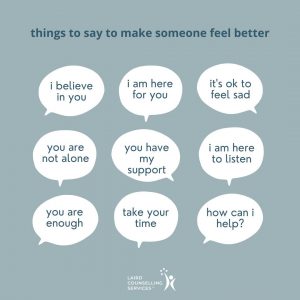 When someone we care about is going through a difficult time, it can be challenging to know what to say or how to help. We may worry about saying the wrong thing, making things worse, or appearing insensitive. It’s natural to feel this way because we want to offer support and comfort, but we also don’t want to make things worse.
When someone we care about is going through a difficult time, it can be challenging to know what to say or how to help. We may worry about saying the wrong thing, making things worse, or appearing insensitive. It’s natural to feel this way because we want to offer support and comfort, but we also don’t want to make things worse.
The truth is that there is no magic phrase or solution that will fix everything. However, acknowledging their pain and letting them know that you are there for them can be a powerful show of support. Sometimes, simply listening without judgment can help someone feel heard and validated.
Ultimately, the most important thing is to be genuine and empathetic. You don’t have to have all the answers, but showing that you care and are willing to be there can make a world of difference to someone who is struggling.
 Life can be challenging at times, and we often find ourselves carrying heavy burdens. However, it’s essential to recognize that not everything that weighs us down is ours to carry. Sometimes, we take on responsibilities or emotions that aren’t our own, leading to unnecessary stress and anxiety.
Life can be challenging at times, and we often find ourselves carrying heavy burdens. However, it’s essential to recognize that not everything that weighs us down is ours to carry. Sometimes, we take on responsibilities or emotions that aren’t our own, leading to unnecessary stress and anxiety.
Learning to let go of things that don’t belong to us can be liberating. It requires us to be honest with ourselves and identify what we can control and what we cannot. We may need to set boundaries, seek support from others, or simply accept that some things are beyond our influence.
Remembering that not everything is ours to carry can help us focus our energy on the things that matter most. It can also lead to greater compassion for others as we become more aware of the burdens they may be carrying. So, take a deep breath, let go of what’s not yours, and trust that you’ll find the strength to carry what truly belongs to you.
 Love languages are the different ways in which individuals express and feel love. These love languages are categorized into five main types: words of affirmation, acts of service, receiving gifts, quality time and physical touch. Understanding one’s own love language and that of their partner can help improve communication, deepen intimacy and strengthen relationships.
Love languages are the different ways in which individuals express and feel love. These love languages are categorized into five main types: words of affirmation, acts of service, receiving gifts, quality time and physical touch. Understanding one’s own love language and that of their partner can help improve communication, deepen intimacy and strengthen relationships.
When you understand your partner’s love language, you can show your affection in a way that resonates with them. For example, if your partner’s love language is acts of service, you can show your love by doing things for them, like cooking dinner or doing the laundry. Similarly, if your love language is physical touch, your partner can express their love by holding your hand or giving you a hug.
Knowing and understanding each other’s love languages can help avoid misunderstandings and conflicts, and build a stronger connection between partners. It is important to remember that everyone has a unique love language, and it is worth taking the time to understand and appreciate them.
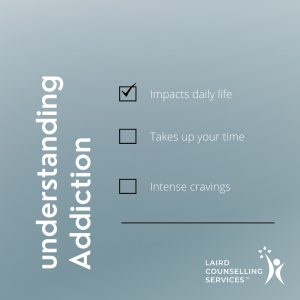 What is addiction?
What is addiction?
Addiction is a complex, and understanding its markers is the first step toward unraveling its grip.![]() Beyond Repeated Use:
Beyond Repeated Use:
Repeated use alone doesn’t define addiction. It’s when the ability to control use crumbles, impacting daily life and functioning—whether at school, work, or home.![]() Time Devotion:
Time Devotion:
Addiction demands time, a significant chunk of it. Whether obtaining, using, or recovering from its effects, the substance or behavior becomes an all-consuming presence.![]() The Overpowering Craving:
The Overpowering Craving:
Craving takes center stage, reaching intensity that eclipses all other thoughts. In places tied to past use, the mind becomes a captive audience to the insatiable desire.![]() Risk and Consequences:
Risk and Consequences:
The peril of addiction extends to hazardous situations and the development of physical or psychological problems.![]() Tolerance and Withdrawal:
Tolerance and Withdrawal:
As the journey into addiction unfolds, tolerance grows—demanding increased amounts for the same effect. Withdrawal, on the other hand, introduces a storm of distress after abruptly halting the substance.
If you are experiencing addiction, reach out to a primary care provider
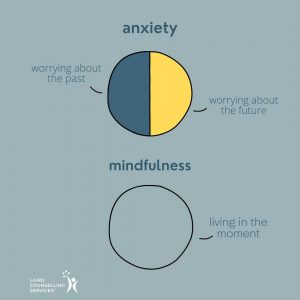 Mindfulness is the practice of being fully present and engaged in the moment, with a non-judgmental awareness of what is happening both inside and outside of ourselves. It involves paying attention to our thoughts, feelings, and bodily sensations without getting lost in them or reacting to them impulsively.
Mindfulness is the practice of being fully present and engaged in the moment, with a non-judgmental awareness of what is happening both inside and outside of ourselves. It involves paying attention to our thoughts, feelings, and bodily sensations without getting lost in them or reacting to them impulsively.
Mindfulness helps us to cultivate a sense of calm and clarity, which can reduce stress and anxiety by helping us to stay grounded even in difficult situations. By staying present and aware, we can respond to challenges with greater ease and effectiveness.
Additionally, mindfulness can help to improve our overall well-being by reducing negative emotions, improving our relationships, and enhancing our ability to focus and concentrate. Overall, mindfulness is a powerful tool for leading a more fulfilling and peaceful life.
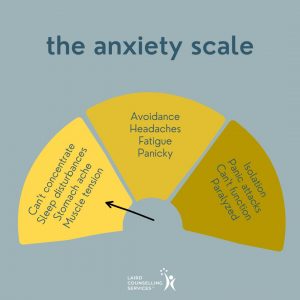 Noticing your emotional, physical, and behavioral cues is an effective way to manage stress and anxiety. Emotions like fear, anger, and sadness can cause physical sensations such as a racing heart, tightness in the chest, or headaches.
Noticing your emotional, physical, and behavioral cues is an effective way to manage stress and anxiety. Emotions like fear, anger, and sadness can cause physical sensations such as a racing heart, tightness in the chest, or headaches.
Recognizing these cues can help you identify when you are feeling stressed or anxious. Pay attention to your body and notice any muscle tension, shallow breathing, or digestive issues. These physical cues can alert you to the fact that you are feeling anxious or stressed. Behavioral cues such as withdrawing from social activities or overeating can also be signs of stress or anxiety.
By noticing and acknowledging these cues, you can take steps to manage your stress and anxiety. Techniques such as deep breathing, meditation, exercise, and talking to a trusted friend or therapist can be helpful in managing stress and anxiety.
